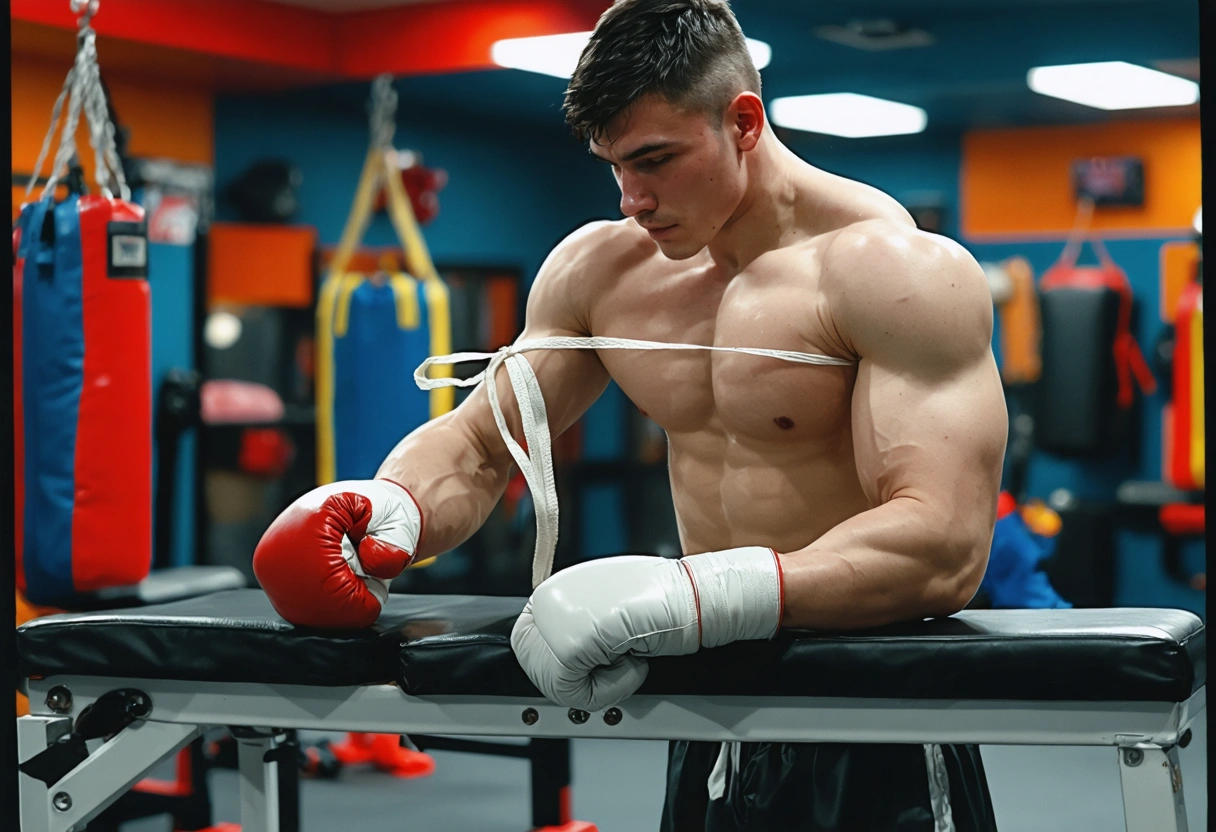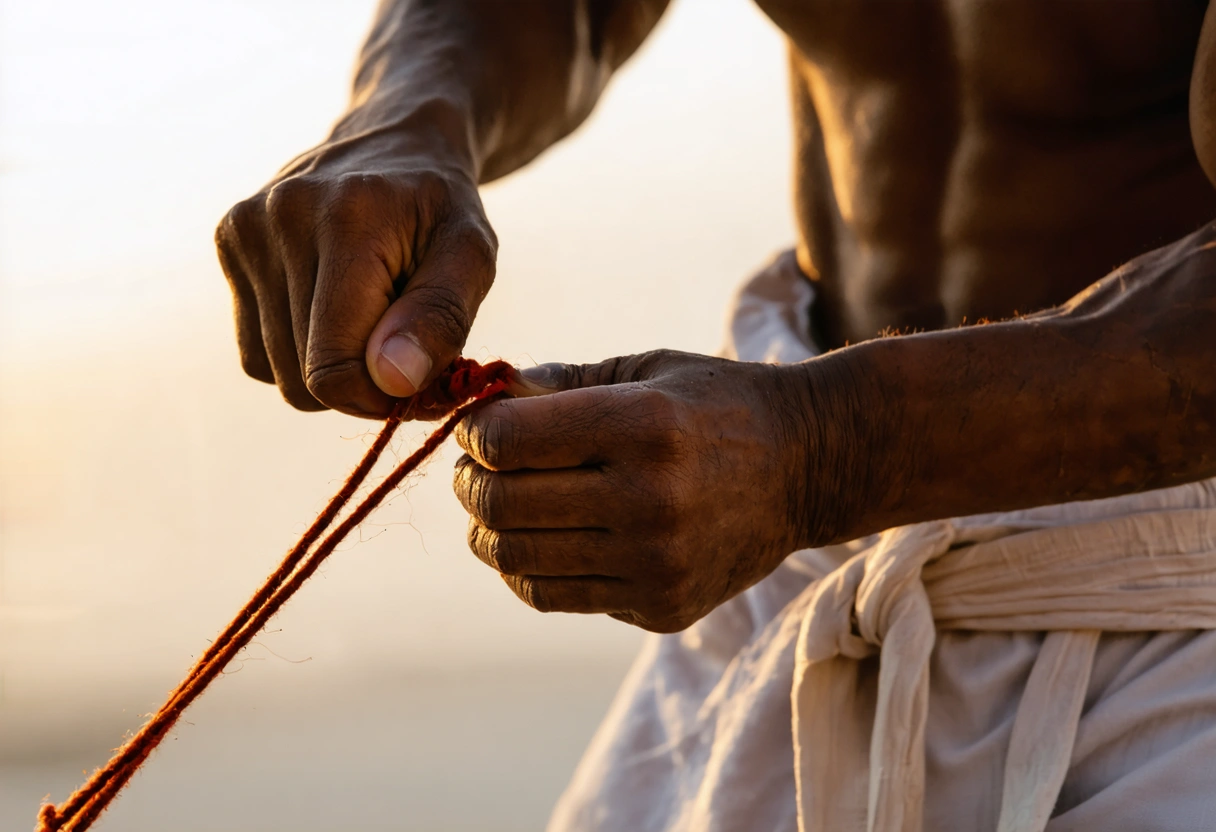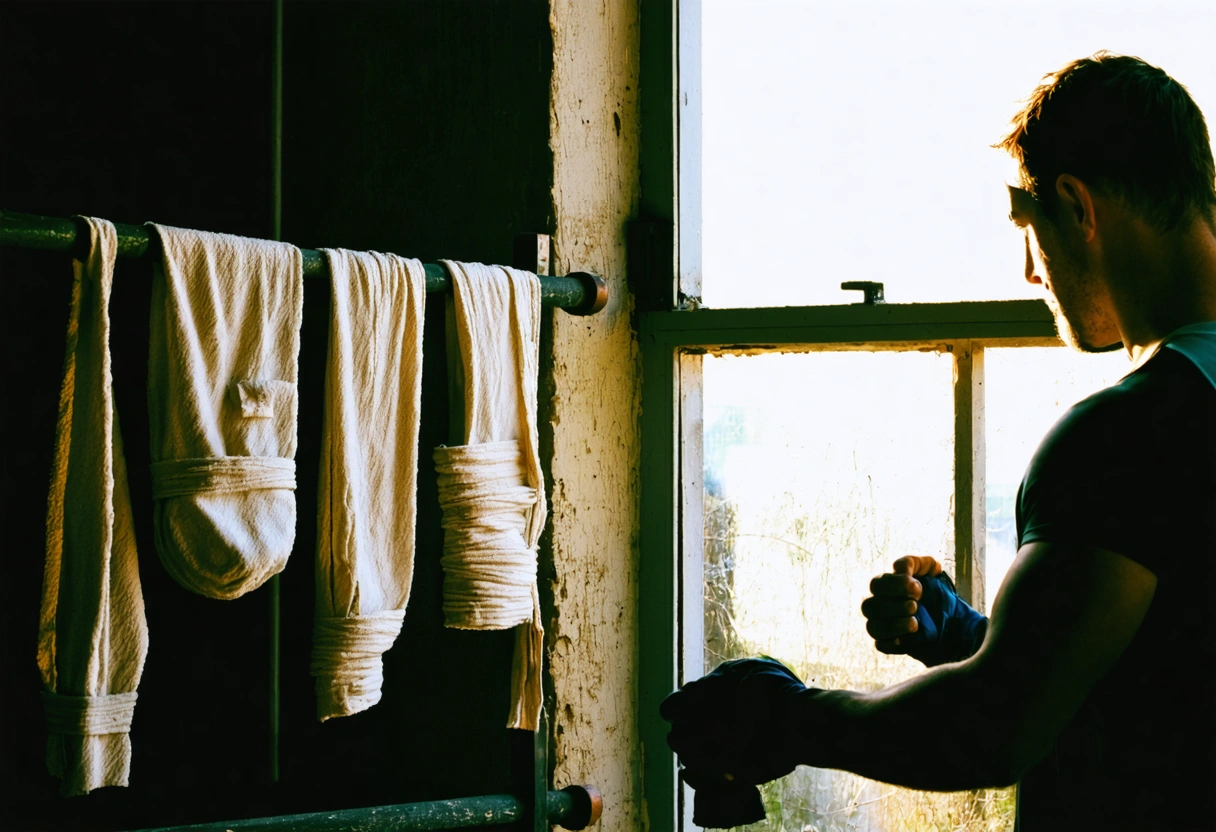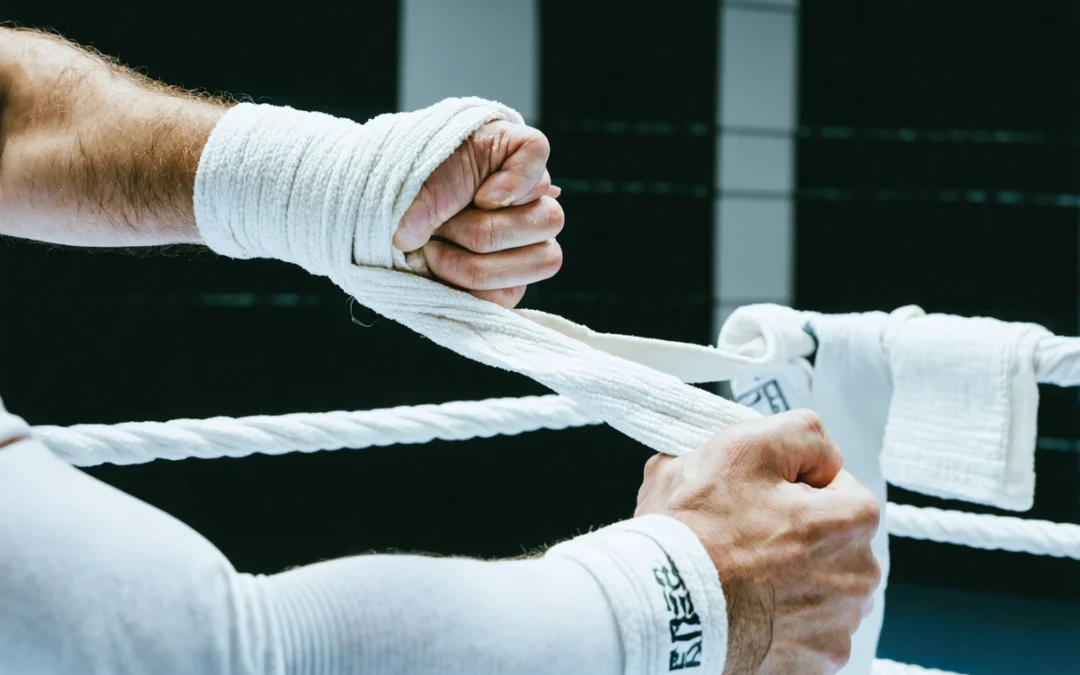Understanding Hand Wraps: Safety and Technique in Boxing
Boxing is a sport that demands not only skill and strength but also rigorous attention to safety and proper technique. Among the various pieces of gear and equipment essential for boxing, hand wraps play a critical role in protecting a fighter’s hands and wrists. Whether you are a novice stepping into the ring for the first time or a seasoned professional, understanding the importance of hand wraps, their correct usage, and the various options available is crucial for both performance and injury prevention.
This comprehensive guide dives deep into the world of hand wraps in boxing, exploring their purpose, the science of hand protection, step-by-step wrapping techniques, types of wraps, common mistakes, and expert tips. By the end, you will have a robust knowledge base to ensure your hands are always safeguarded, allowing you to train and compete with confidence.
Why Hand Wraps Matter in Boxing
The hands are among the most complex anatomical structures in the human body, comprising numerous small bones, joints, ligaments, and tendons. When a boxer throws a punch, intense force travels through the knuckles and metacarpals, which, without proper support, can lead to serious injuries such as fractures, sprains, and ligament tears. Hand wraps act as a critical first line of defense, absorbing and distributing impact, securing the delicate bones, and providing additional stability to the wrist and thumb.
According to the National Center for Biotechnology Information on boxing injuries, hand injuries are among the most prevalent in combat sports. Properly applied hand wraps can significantly reduce the risk of these injuries, ensuring longevity in training and competition. Hand wraps also help to minimize abrasion and cuts caused by the friction of gloves, further enhancing comfort and protection.
The Anatomy of a Boxing Hand Wrap
A boxing hand wrap is more than just a strip of cloth. Its design is specifically tailored to offer support in key areas that are prone to injury. Most traditional wraps are made of cotton or a cotton-polyester blend, providing both breathability and a slight stretch for a snug fit. An average wrap is between 108 and 180 inches long, catering to different hand sizes, wrapping styles, and levels of protection desired.
Key features of a boxing hand wrap include:

- Thumb Loop: Ensures a secure starting point, anchoring the wrap firmly.
- Length and Width: Longer wraps allow for more layers and coverage, especially for those with larger hands or who desire extra wrist support.
- Velcro Closure: Modern wraps feature Velcro for easy fastening and adjustability.
- Elasticity: Some wraps (often called “Mexican style”) have a slight elasticity, enabling a tighter, more customized fit.
The choice of wrap often depends on personal preference, hand size, and the type of training. Beginners might find shorter, semi-elastic wraps easier to manage, while professionals often prefer longer wraps for maximum coverage and support.
The Science Behind Hand Protection
Effective hand protection in boxing is rooted in biomechanics and injury prevention. Each punch subjects the hand and wrist to rapid acceleration and deceleration forces, which can easily lead to sprains or fractures if not properly managed. Hand wraps are designed to keep the small bones of the hand aligned, reduce excessive joint movement, and cushion the knuckles against repetitive impact.
Research from the Verywell Fit guide on boxing injuries highlights that most hand injuries occur due to improper alignment and lack of support. By immobilizing the wrist and supporting the thumb, wraps help channel force through the entire structure of the hand, rather than concentrating it in vulnerable areas. This not only reduces the risk of injury but also improves punching power and accuracy.
Hand wraps also play a psychological role: knowing your hands are protected allows boxers to punch with greater confidence and commitment. This mental assurance can be the difference between holding back and delivering a decisive blow during sparring or competition.
Types of Hand Wraps: Choosing the Right One
There are several types of hand wraps available, each offering unique benefits and best suited for different scenarios. Understanding these options ensures you select the right wrap for your needs, optimizing both comfort and protection.

Traditional Cotton Hand Wraps
Traditional cotton hand wraps are the most common choice among boxers. These wraps are durable, machine-washable, and provide reliable support. They are available in various lengths, with 180-inch wraps being the most popular for adult athletes. Cotton wraps are ideal for everyday training, providing a balance of protection and ease of use.
Mexican Style (Elastic) Hand Wraps
Mexican style wraps incorporate a blend of cotton and elastic fibers, offering a stretchy, form-fitting wrap. This elasticity allows for a tighter, more secure fit, which can enhance comfort and support, especially during intense training sessions. However, they may lose their elasticity over time and require replacement more frequently than their all-cotton counterparts.
Gel Hand Wraps and Quick Wraps
Gel wraps are a modern alternative, featuring a gel padding over the knuckles and a fingerless glove design. They are easy to slip on and provide instant protection, making them ideal for quick training sessions or beginners who struggle with traditional wrapping techniques. However, they may not offer the same level of wrist support as properly applied fabric wraps.
Quick wraps, similar to gel wraps, are designed for convenience. They combine a simple slip-on glove with a short wrap to secure the wrist. While quick wraps save time, they are generally best suited for light bag work or fitness boxing rather than intense sparring or competition.
Professional Tape and Gauze
Used primarily in professional bouts, tape and gauze wraps provide the highest level of protection. Applied by experienced cornermen or athletic trainers, this method involves wrapping the hands with gauze for cushioning, followed by tape for rigidity and support. While not practical for everyday gym use due to time and cost, understanding this method is valuable for competitive boxers.

How to Wrap Your Hands for Boxing: Step-by-Step Technique
Proper hand wrapping is a skill every boxer must master. An incorrectly wrapped hand offers little protection and may even increase the risk of injury. Here is a detailed, step-by-step guide to wrapping your hands for boxing:
-
Start with Clean, Dry Hands:
Always begin with washed and thoroughly dried hands. Moisture can cause wraps to slip and breed bacteria, leading to unpleasant odors and skin infections.
-
Anchor the Thumb:
Insert your thumb through the loop at one end of the wrap. Ensure the wrap lays flat against the back of your hand, as this will be your starting anchor point.
-
Secure the Wrist:
Wrap around the wrist 3 to 4 times, depending on the length of your wrap. This provides the foundation for wrist stability, a key factor in injury prevention.
-
Cover the Knuckles:
Bring the wrap up and over your knuckles, covering them 3 to 4 times. Spread your fingers slightly during this step to ensure the wrap is not too tight, allowing for natural movement and blood flow.
-
Back to the Wrist:
Bring the wrap down to the wrist for a single turn to lock in the coverage already applied.
-
Between the Fingers:
Wrap between each finger, starting between the pinky and ring finger, then moving to the others. This step secures the knuckle padding in place and adds structural integrity for punching.
-
Support the Thumb:
Wrap around the base of the thumb and anchor it to the wrist. This helps prevent hyperextension and thumb injuries during punching.
-
Finish at the Wrist:
Continue wrapping around the wrist until the entire length is used. Secure with the Velcro closure, ensuring a snug but not overly tight fit.
For a visual demonstration, the Boxing News Online guide to hand wrapping provides step-by-step images and tips to help refine your technique. Practicing this process regularly ensures muscle memory and the ability to wrap quickly and confidently before every session.
Common Mistakes When Wrapping Hands
Even experienced boxers can make mistakes when wrapping their hands. Some of the most frequent errors include:
- Wrapping Too Tightly: This can restrict blood flow, leading to numbness and decreased performance. Always check that you can make a fist comfortably after wrapping.
- Skipping the Thumb or Fingers: Omitting these areas leaves them vulnerable to injury. Proper technique always includes thumb and finger support.
- Uneven Wrapping: Bunched or twisted wraps can create pressure points, causing discomfort and reducing protection.
- Neglecting the Wrist: Without adequate wrist support, the risk of sprains and hyperextension increases significantly.
Take the time to learn and refine your wrapping technique. If you are unsure, seek guidance from a coach or experienced teammate to ensure you are maximizing the protective benefits of your wraps.
Hand Wraps Maintenance: Keeping Your Gear in Top Condition

Like any piece of boxing equipment, hand wraps require regular cleaning and maintenance to ensure longevity and hygiene. After each use, hand wraps should be washed to remove sweat, bacteria, and dirt. Most wraps are machine washable; however, placing them inside a mesh laundry bag prevents tangling and damage during the wash cycle. Always air-dry your wraps to maintain their elasticity and prevent shrinkage.
Rotating between multiple pairs of wraps is a good practice, especially for those who train frequently. This not only ensures you always have a clean set available but also extends the lifespan of each pair. Regularly inspect your wraps for signs of wear, fraying, or loss of elasticity, and replace them as needed to maintain optimal protection.
The Title Boxing hand wrap care guide offers further tips and recommendations for keeping your wraps in peak condition, ensuring that hygiene and safety are never compromised.
Hand Wraps and Glove Compatibility
Selecting the right hand wraps is only part of the equation; ensuring they fit comfortably inside your boxing gloves is equally important. Gloves come in various sizes and styles, and the thickness of your wraps can affect how snugly your hand fits inside the glove. Overly thick wraps may make gloves feel too tight, restricting movement and causing discomfort, while thin wraps may not provide adequate protection.
When purchasing new gloves, always try them on with your preferred hand wraps already applied. This ensures a secure and comfortable fit, allowing for optimal performance. Some athletes opt for custom-molded gloves or specific wrap styles to achieve the perfect balance between support and dexterity.
Hand Wraps in Competition: Rules and Regulations
In competitive boxing, hand wrapping is subject to strict rules and oversight to ensure fairness and athlete safety. Regulatory bodies like the USA Boxing hand wrapping procedures outline detailed requirements for the type, length, and application of wraps. These rules are in place to prevent tampering, illegal padding, or excessive hardening, which could endanger opponents.

Before official bouts, wraps are often inspected by officials to confirm compliance. Violations can lead to disqualification or penalties. For amateur boxers, understanding these regulations and practicing the approved wrapping method is essential. Coaches and trainers should stay informed about the latest updates to ensure their athletes compete within the guidelines.
Expert Tips for Maximizing Hand Wrap Effectiveness
To get the most out of your hand wraps, consider these expert tips:
- Practice Consistently: The more you practice wrapping your hands, the faster and more efficiently you will become. Consistency leads to better protection and comfort.
- Invest in Quality: High-quality wraps last longer, provide better support, and are less likely to cause irritation or discomfort.
- Adjust for Activity: For bag work or mitt drills, you may choose a lighter wrap, while sparring or competition may require extra layers or professional tape and gauze.
- Listen to Your Body: If you experience discomfort, numbness, or pain while wearing wraps, adjust your technique or consult a coach for guidance.
- Stay Hygienic: Always use clean wraps, especially if you have cuts or abrasions on your hands, to prevent infection.
Incorporating these practices into your routine ensures your hands remain protected, allowing you to focus on skill development, power, and endurance in every session.
The Unseen Foundation of Boxing Performance
Hand wraps may seem like a simple accessory, but they are a fundamental element of boxing safety and technique. From reducing the risk of injury to enhancing punching power and confidence, the benefits of proper hand wrapping cannot be overstated. By investing time in learning the correct technique, choosing the right type of wrap, and maintaining your equipment, you lay the groundwork for sustained success in the sport.
Whether you are stepping into the gym for a cardio session or preparing for a championship bout, never underestimate the value of well-wrapped hands. For additional in-depth information on boxing gear and safety, explore the ExpertBoxing hand wraps guide. With the right knowledge and preparation, your hands will not only stay protected but will also deliver every punch with precision and power.

